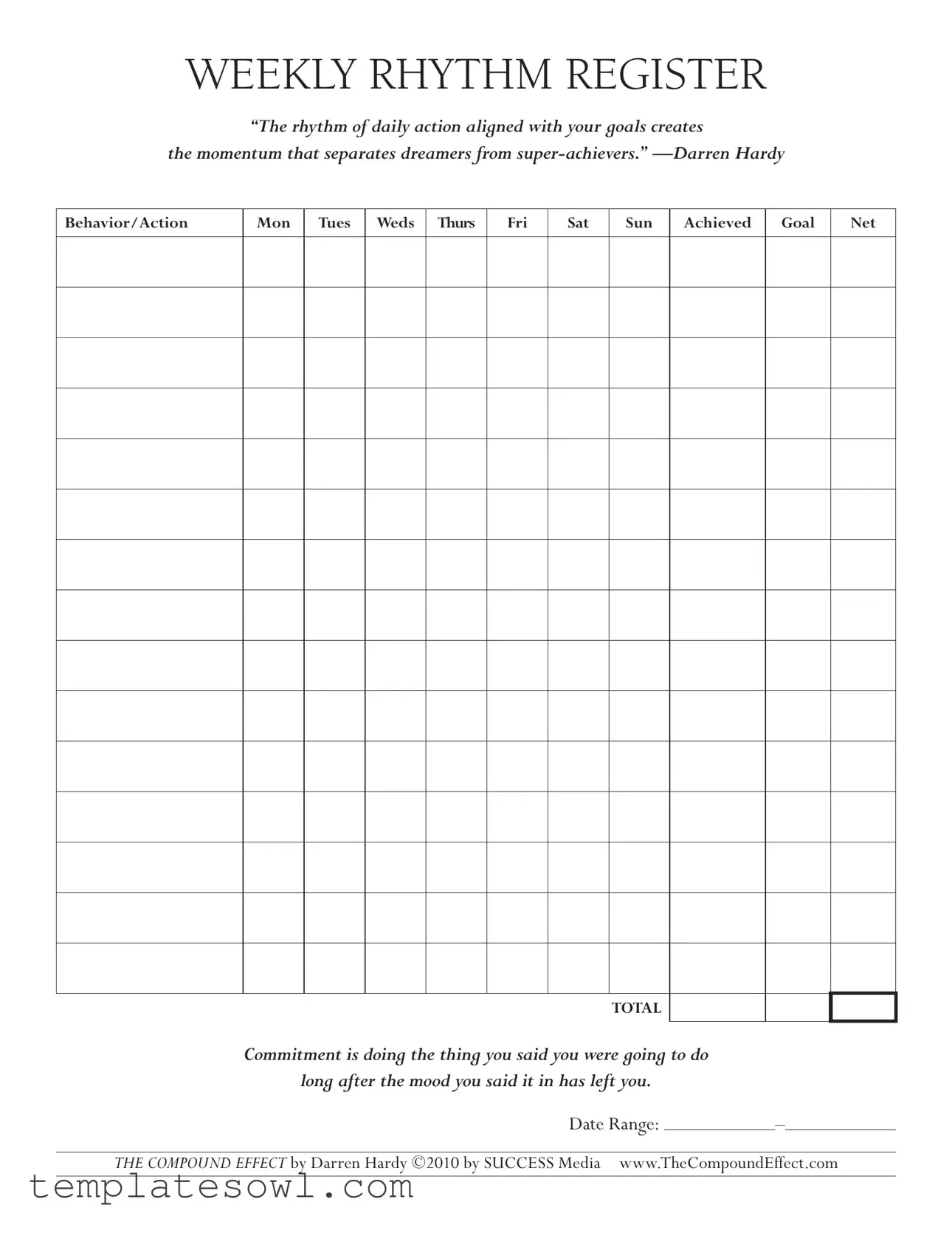What is the purpose of the Weekly Register form?
The Weekly Register form is designed to help individuals track their daily actions that align with their personal goals. By maintaining a record of activities throughout the week, users can cultivate a rhythm that fosters achievement and continuous improvement. This systematic approach allows for reflection and adjustment, encouraging momentum towards reaching one's goals.
How do I fill out the Weekly Register form?
To fill out the Weekly Register form, begin by selecting a date range that you wish to track. Next, make note of the specific behaviors or actions you aim to achieve each day of the week—from Monday through Sunday. As the week progresses, record whether you completed each action in the “ACHIEVED” column. At the end of the week, tally your successful actions in the “NET TOTAL” column to evaluate your overall progress.
Can I use the Weekly Register form for different goals each week?
Yes, the Weekly Register form is flexible enough to accommodate varying goals. Each week, you can choose different actions or behaviors to focus on, based on your evolving priorities. This adaptability allows you to make meaningful adjustments and keep your momentum going, regardless of changing circumstances or aspirations.
What types of actions should I track?
You can track any actions that you believe will bring you closer to your goals. These may include professional tasks, personal development activities, exercise routines, or even time management improvements. It’s important to select actions that resonate with your ambitions and are achievable within the week to ensure you remain motivated.
How can the Weekly Register form help me stay committed?
By providing a structured way to monitor your actions, the Weekly Register form fosters accountability. When you consistently document your progress, you reinforce your commitment to your goals. The visual representation of achieved actions can also serve as a motivational tool, reminding you of your capabilities even when enthusiasm wanes.
Is there a specific format I should follow when entering my actions?
While there is no strict format, clarity is key. Use concise yet descriptive phrases for your actions. This helps to ensure that you understand what each task requires. Feel free to personalize the format to suit your style, but aim for simplicity to enhance ease of use and reflection.
How often should I review my Weekly Register form?
Regular review is vital for effectiveness. At the end of each week, set aside time to evaluate your progress. Consider what worked well and what challenges you faced. This reflection will not only inform your goal-setting for the upcoming week but will also promote continuous growth and adaptation.
Can I share my Weekly Register form with others?
Sharing your Weekly Register form can be beneficial, especially if you are part of a community or team with shared goals. It can foster accountability and provide encouragement. However, you may choose to keep your form private if that better aligns with your personal approach to tracking progress.

